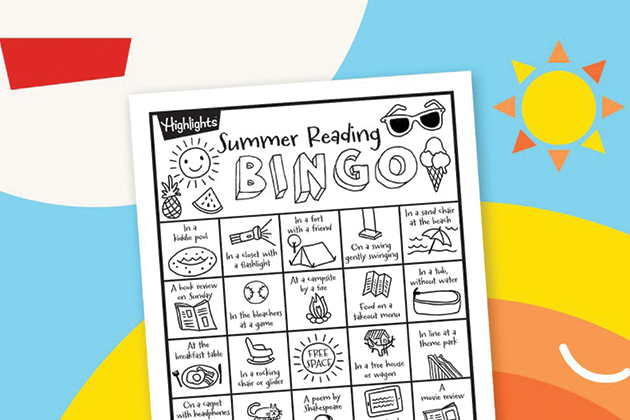Using Data to Guide Parenting Decisions, a Discussion with Dr. Emily Oster

Christine French Cully, Highlights Editor-in-Chief, and Hillary Bates, Director of Purpose and Impact, sit down with Dr. Emily Oster, an economist at Brown University, to discuss how to understand data to improve decision making for parents.
Christine starts off by asking Dr. Oster what drew her to studying economics and what she loves about it. She wonders how Dr. Oster sees economics as a way of solving problems and helping make decisions, especially those related to raising children.
Dr. Oster says that personally, the value economics adds to decision making is being serious and thoughtful about data. Economics is a decision science, she explains. It employs a set of tools to help understand how you can use data to make thoughtful decisions that weigh costs and benefits.
She shares that as a child, her parents used economic principles of informed decisions at home. Her mom would use economic principles to decide when and who should run the dishwasher and when they should grocery shop, for example. As she grew up, Dr. Oster realized that not everyone uses those principles in their home. Now she hopes she can share her knowledge to help others employ economic principles in the decision-making processes in their own lives.
Christine says that in today’s world we have access to so much information it can be overwhelming. She notes parents could constantly consume studies on things like the amount of screen time kids should have, the safety and efficacy of sunscreen or the correlation of bedtime with good grades. However, she notes, “not all this information is valuable and might be weak or inconclusive.”
“Parents have never had more information about parenting, and yet we’ve never been less sure of ourselves.” -Christine French Cully
She asks what advice Dr. Oster could give to parents who want the very best for their children and are trying to decide what information is worthy of their attention.
Dr. Oster stresses it’s almost never the case that a new study has all the answers to a question. In the current media environment, she explains, it’s common to see attention-grabbing headlines, saying that a new study has found that “even 5 minutes of screen time can cause children to…whatever the bad thing is that can happen.”
She continues to say those headlines, along with focusing solely on a single study is unhelpful to parents, and she encouraged parents to:
- Take a step back and think about whether the new study offers valuable information.
- Contextualize the decision-making process with the data presented and family preferences and values.
Hillary shares that she was talking to parents in preparation for this episode about the experience of reading a news story and having a feeling of panic because the article says something you’re doing as a parent is wrong. Since parenting is one of the most important things we do with our time, Hillary wonders if people involved in communicating these studies to the media and people who do the research have a natural bias to form conclusions because we want to know if we’re doing this right.
Dr. Oster agrees there are biases that influence how information is presented. From the individual parenting standpoint, we’re always searching for how to do things correctly. We’ll naturally be drawn to information that says, “here’s how to do it right.” It’s good to acknowledge how we’re reacting to the information that’s out there and take a step back to understand how it’s influencing us.
On the media side, Dr. Oster notes, headlines are meant to grab people’s attention and make them read an article. A headline saying, “This is how to do it right” is more effective in drawing people in than if the headline said, “Here’s a small amount of information that adds to the other 27 studies we have about this topic,” Dr. Oster explains.
Hillary notes that parents get a lot of messages from media that say what’s best for kids; however, what’s “best” might not be well defined for us on a personal level. She points out how there are topics that can be studied and quantified, like what a child earns when they grow up. But there are things that can’t be easily quantified, like how creative they are or how do they approach the world with curiosity, which are things we want to instill in our kids.
Hillary asks Dr. Oster how she thinks about the outcomes that matter in parenting.
Dr. Oster used studies about schools as an example. There’s always the question of “what makes a good school?” From a parent’s perspective, there’s a lot of granularities in how to answer that question—are kids happy and supported and learning in a meaningful way at school? However, when researchers ask this question, they’re likely looking at test scores. Test scores are easily measured, but it’s not the whole picture on what makes a good school. And unfortunately, the test-score data can sometimes be overemphasized because it’s easy to quantify and hold up as a concrete measure.
For herself, Dr. Oster explains, she and her husband try hard to be explicit in what they’re trying to achieve as parents and what they view as success for their kids. They evaluate what they’re doing to help meet their goals. She notes that from a policy standpoint that’s harder to do.
Christine brings up a topic that’s important at Highlights: reading to young children. A study in the mid-90s showed a gap in early life language exposure between higher income and lower income children. Christine asks Dr. Oster to talk about this study known as the “30 Million Word Gap.” She asks her to explain how its interpretation may have led to some ineffective policy outcomes for kids.
Dr. Oster briefly explains the study. About 70 families were recruited from various socioeconomic levels. Various methods were used to measure how many words kids had heard, and over time, they observed that kids in the higher income level were hearing more words than those in the lower income level. Children in higher income families performed better in school than their lower income counterparts, which is broadly true beyond this study. They had better test scores, which as previously mentioned, are easy to measure. They, therefore, linked the number of words and school success to the idea that it’s important to expose kids to language.
What’s interesting about this finding, Dr. Oster notes, is how we take it as parents beyond what it is. It’s true that exposure to language early in life is helpful for kids and learning, and there’s some good evidence that reading to kids early on can have a positive impact on literacy and learning to read. However, one idea that came out of the study, she points out, is that just talking more to your kids is good. The more you say the better, and if you’re trying to do everything right for your kids, talking more to them could mean narrating everything.
That’s not what’s implied by this study, she says. Talking more to kids is just part of what’s presented, but it led parents to think that saying more words in early life is a way to be a better parent.
Dr. Oster shares how she worries that when just one data point guides parenting (i.e., more words are better), it’s easy to feel like a failure. Perhaps a parent doesn’t have the emotional energy to narrate every single diaper change, and then they feel like they’re failing.
Hillary adds that parents might engage in constant narration and unnecessarily exhaust themselves. She admits she narrated diaper changes because she had absorbed the messages about saying as many words as possible.
Hillary notes that an idea can take root in our culture in part because of data and in part because it feels right to us. For instance, there’s a lot of discussion right now about the child mental health crisis. It’s been tied to the pandemic, but we know there’s a lot of data about children’s mental health over the last decade. Intuitively, Hillary continues, it makes sense that children have suffered during a global pandemic, but we might draw the wrong conclusions about the issue because of the power of intuition.
We’re making a lot of policy decisions right now, Hillary says, around the mental health issue—what schools, society and parents need to do. She asks how those who’re interested in helping kids can equip themselves to do a better job of interpreting studies that are coming out about mental health and kids.
Dr. Oster agrees that the pandemic has had an impact on kids’ mental health, but as with other issues, the pandemic showed us problems that were there before. She ponders whether the pandemic changed the trend, and perhaps it did, but it would be a mistake to say the pandemic caused the mental health crisis for kids. She worries that this correlation could negatively affect mental health assistance as the pandemic wanes because this problem existed before the pandemic.
Dr. Oster offers some tips to parents when looking at different studies to gather information and make decisions. Parents should ask themselves:
- How reliable is the variation in the study?
- How large is the study?
- How plausible is the study?
Hillary asks that for those who regularly consume parenting news, what are issues that have repeated, quality data related to what matters in raising healthy, fulfilled, stable adults. What can we conclusively count on?
Dr. Oster shares there’s good evidence on two issues—one for little kids and one for big kids.
With little kids it’s food allergen intervention, she says. Studies starting around 2015 indicate that introducing food allergens during infancy makes children much less likely to be allergic.
The other issue is related to sleep. Dr. Oster explains many studies have researched sleep in children all the way through high school and found they aren’t getting enough sleep. She provides an example of one study for elementary school kids. Kids were separated into two groups. One group went to bed an hour earlier than usual, and the other group went to bed an hour later than usual for about 4 days. After that, kids were evaluated. The study showed that the kids who got less sleep performed worse on the cognitive tests and had more behavioral issues. Prioritizing sleep, she says, is very important.
Christine ends the conversation in the usual way by asking, “If we truly believe children are the world’s most valuable people what would we change?”
Dr. Oster recommends the parenting book Parent Nation by Dana Suskind. It’s a call to action about what we can do to improve the lives of parents and the focus is on support. She says, “We’re not providing enough support, which goes across all socioeconomic levels, although disadvantaged populations are disproportionately affected. Support can come in the form of paid parental leave, child tax credits, universal pre-K, etc. There are so many things that we’re not providing that would be beneficial…and a tremendously good investment in our kids.”
For 75 years, Highlights’ magazine has received thousands of letters and email from kids every year, and we answer every single one. ‘Dear Highlights’ has always served as a way to help ease children’s concerns and help encourage them to become their best selves. In so doing, we’ve sustained an ongoing, authentic dialogue with kids that has deepened our understanding of their worries and fears, as well as their hopes and dreams. Our goal of the’ Dear Highlights’ podcast is to elevate the voices of children from these letters and help parents raise kids to be curious, creative, caring, and confident.









